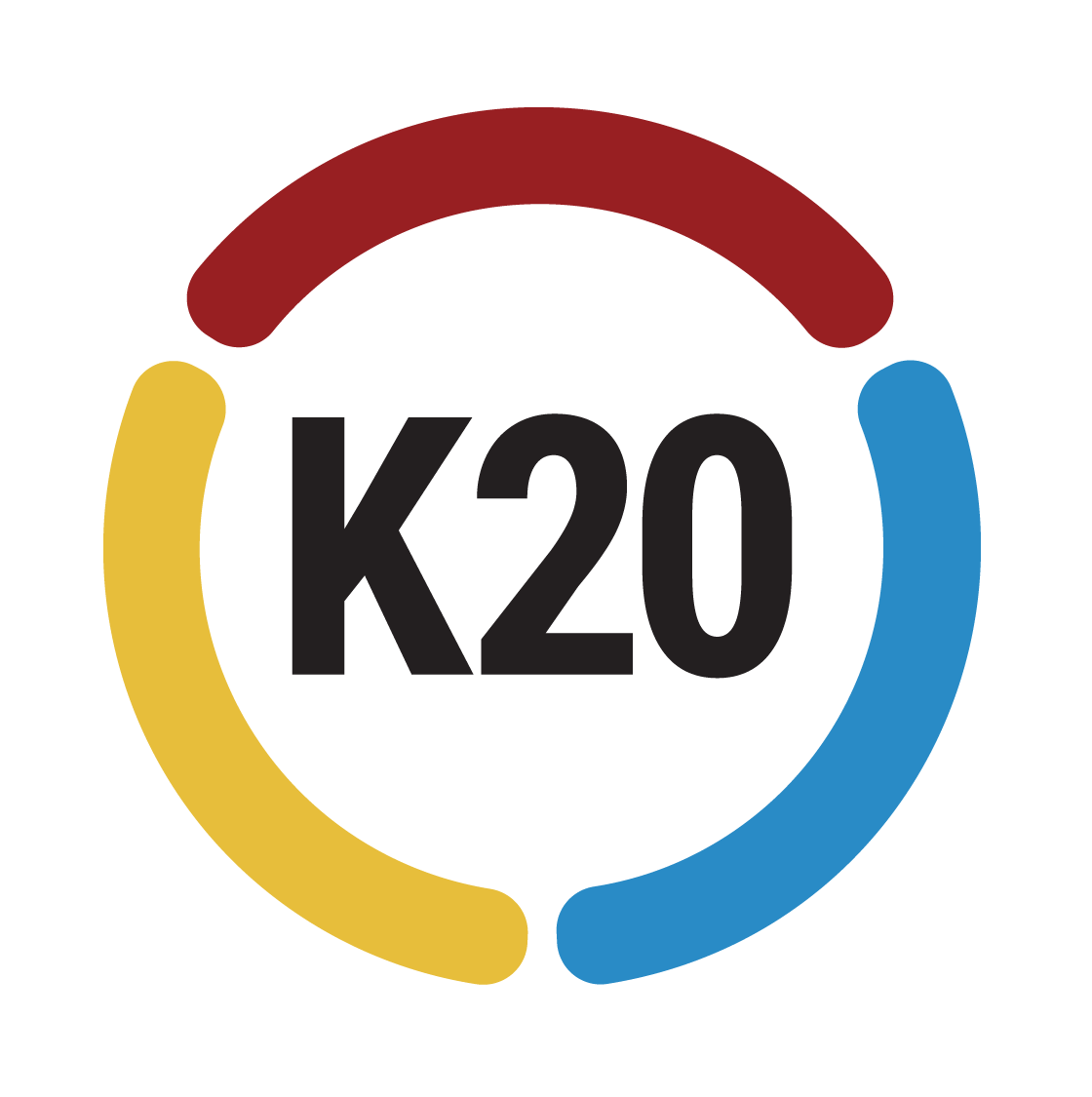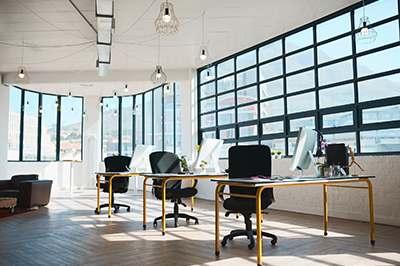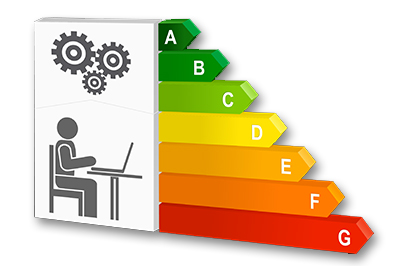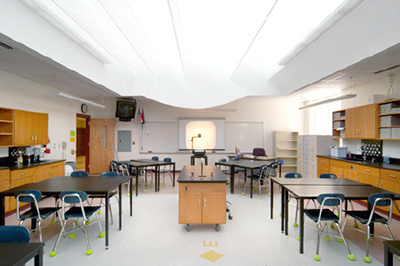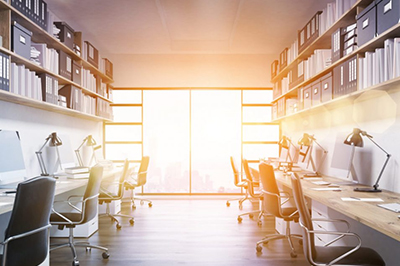Lighting Extra Features
Lighting Extra Features
Lighting & Thermal Comfort (LTC)
The influence of the provided lighting (daylight and artificial lighting) on the thermal condition and comforts of classrooms is discussed. Color, reflection, and lighting shades impact classroom thermal comfort.
From the supporting literature (linked), there is an association between classroom lighting and thermal comfort. The amount of provided daylight, lighting color, reflection, diffusion, lighting shades, direct solar radiation and lighting fixtures influence thermal comfort of a classroom. Hence, adequate classroom illumination usually goes with appropriate classroom temperature and thermal comfort, thereby requiring less energy for heating, ventilation, and cooling.
Recommendations
1. Classroom design should reflect research-based technique.
2. The decision on color and lighting should be associated with students learning outcomes.
3. Involve the students in the decision making regarding classroom design.
4. Examine the impact of the different types of lighting systems and sources on students.
5. Consider the orientation of windows in the design of classrooms.
6. Avoid designing classrooms without windows.
7. Always use artificial light to complement natural lighting.
Lighting and Energy Performance (EP)
From the supporting literature (linked above), energy demand for classrooms is reduced by maximizing day lighting in the design and window orientation. This results in less use of lighting fixtures. The students’ health, performance, and behavior are improved, and there are increased savings. The savings come from a reduction in the cost of maintenance, operations, and energy use.
Recommendations
1. Maximize the use of natural light, but artificial light can be used to complement it.
2. Cool or warm white lamps are preferred because they are more efficient and less expensive than full-spectrum lamps.
3. Promote the use of LED lamps.
4. Research on lighting and its use should be based on suitability for task, building, neighborhood, energy efficiency, aesthetic and lighting system performance.
5. Adopt energy efficient lighting system.
6. Use motion detectors and low lighting lamps in places like storage and maintenance areas.
7. Use a trackable digital blind system that maximizes the use of natural light, energy efficient, and also shows blinds’ position and rate of change.
8. Promote the use of automated lighting control to reduce energy use.
Lighting in School Learning Environment (LSLE)
From the supporting literature (linked above), the educational environment and the physical sustainability of school buildings/classroom design impact learning and students achievement. Providing enough daylight through larger windows and using solar panels improve the energy efficiency and sustainability of school buildings. proper classroom lighting guarantees improved health, performance, safety, and a reduction in stress level.
Healthy Learning Environment (HLE)
Providing lighting and healthy learning environment to improve student physical and mental well-being.
From the supporting literature (linked), by providing many LEED criteria in school buildings, a healthier learning environment can be provided.
Full-Spectrum Lighting (FSL)
Full spectrum lighting is an electromagnetic lighting covering most parts of the wavelength (from infrared to near-ultraviolet). Full spectrum lighting can benefit human, animal, and plant. An instance of a source of full spectrum lighting is the sun.
From the supporting literature (linked), the influence of full-spectrum lighting on student performance is reviewed. There was no consistency on the use and efficiency of full-spectrum lighting. Full-Spectrum Fluorescent (FSL) Light was observed to be a treatment for a seasonal disorder, and by extension, immune disorder among students. Some associations observed with full-spectrum fluorescent light includes (a) full-spectrum lighting and students academic achievements. (b) Full-spectrum light and improved vision, perception and cognitive performance. (c) Full-spectrum light and improved students dental care, classroom behavior, improved seasonal depression and academic performance. However, it has been argued that Full-spectrum lamps have shorter lifespan hence, they are replaced frequently thereby incurring additional cost.
Recommendations
1. Use Full-spectrum light to improve students academic achievement.
2. Use full-spectrum fluorescent light because it could solve health challenges like hyperactive behavior and seasonal disorder.
3. Use Full-spectrum fluorescent light to improve dental care.
4. Researchers and facility managers should be more concerned with the suitability of lighting system and lamp for a particular task, building, performance, native culture, aesthetic, and energy efficiency.
5. Promote the use of full-spectrum light as complements to natural lighting.
Lighting & Color (LC)
This is also known as the “color temperature”. It is the color tint of the white light (which can be the color of Fluorescent, LED, or Incandescent).
From the supporting literature (linked), there is an effect of color and lighting on student learning, well-being, and behavior. Lighting color affects students behavior, performance, and blood pressure. Classroom design decisions on color and lighting should be associated with the students learning outcomes.
Recommendations
1. Classroom design should reflect research-based technique.
2. Involve the students in the decision making regarding classroom design.
References
1. Abdelatia, B., Marenne, C., & Semidor, C. (2010). Daylight Strategy for Sustainable Schools: Case Study of Prototype Classroom in Libya. Journal of Sustainable Development, 3(3), 60-67. doi:http://dx.doi.org/10.5539/jsd.v3n3p60
2. Allen, Edward, and Joseph lano. 2006. The Architect’s Studio Companion: Rules of Thumb for Preliminary Design. John Wiley & Sons.
3. Ariani, M. G., & Mirdad, F. (2015). The Effect of School Design on Student Performance. International Education Studies, 9(1), 175.
4. Ballina, M. (2016). “Illuminating education: composition and use of lighting in public k-12 classrooms.” Bachelor of Science, Massachuset Institute of Technology, Massachuset
5. Barret, P., Davies, F., Zhang, Y., and Barrett, L. (2015). “The Impact of Classroom Design on Pupils’ Learning: Final Results of a Holistic, Multi-level Analysis.” Building and Environment, 89, 118-133
6. Barrett, P., Zhang, Y., Moffat, J., Kobbacy, K. (2013). “A Holistic, Multi-level Analysis Identifying the Impact of Classroom Design on Pupils’ Learning”. Building and Environment, 59, 678-689
7. Bauer, S. E; Wagner, S. E; Burch, J; Bayakly, R; Vena, J. E (2013). “A case-referent study: light at night and breast cancer risk in Georgia”. Int J Health Geographics, 12,23
8. Becker, R., Goldberger, I., & Paciuk, M. (2007). Improving energy performance of school buildings while ensuring indoor air quality ventilation. Building and Environment, 42(9), 3261-3276.
9. Best Practices Manual. (2002). Collaborative for High Performance Schools, CA; Document: ED478351, published by ERIC (Education Resources Informa-tion Center), California Government, USA.
10. Blackmore, J; Bateman, D; Loughlin, J; O’Mara, J; Aranda, G; Centre for Re (2011). “Research into the Connection Between Built Learning Spaces and Student Outcomes: Literature Review”. Department of Education and Early Childhood Development, State of Victoria.
11. Boemi, S. N., Irulegi, O., & Santamouris, M. (2016). Energy Performance of Building. Switzerland: Springer.
12. Boray, P. F., Gifford, R., & Rosenblood, L. (1989). Effects of warm white cool white and full-spectrum fluorescent lighting on simple cognitive performance, mood, and ratings of others. Journal of Environmental Psychology, 9(4), 297-307
13. Brown, Z.B (2009). “Occupant Comfort and Engagement in Green Buildings: Examining the Effects of Knowledge, Feedback and Workplace Culture”. The University of British Columbia, Vancouver, BC.
14. Bourgeois, D; Reinhart, C; Macdonald, I. (2006) “Adding Advanced behavioral models in whole building energy Simulation. A Study on the total energy impact of manual and automated lighting control”. ELSEVIER, 38(7), 814-823.
15. Butin, D. (2000). “Classroom.” National Clearinghouse for Educational Facilities, Washington, DC., Washington, DC., 1-5
16. DiLaura, D; Houser, K; Mistrick, R; Steffy, G. (2011). “The Lighting Handbook.” Illumination Engineering Society of North America, New York, NY, 328.
17. Dunn, R., Krimsky, J., S., Murray, J., B., and Quinn, P., J. (1985). “Light up their lives: A review of research on the effects of lighting on children’s achievement and behavior.” The Reading Teacher, 38(9), 863-869.
18. Earthman, G. I. (2004). “Prioritization of 31 Criteria for School Building Adequacy.” American Civil Liberties Union Foundation of Maryland. Retrieved in 2016 from http://www.schoolfunding.info/policy/facilities/ACLUfacilities_report1-04.pdf, Baltimore, MD.
19. Edwards, L., Torcellini, P. (2002). “A Literature Review of the Effects of Day Light on Building Occupants”. National Renewable Energy Laboratory, Colorado NREL/TP-550-30769
20. Exchange, H. P. S., & Partnerships, N. E. E. (2005). NE-CHPS New Construction Major Renovation. Retrieved from Northeast Collaborative for High Performance School Protocol
21. Fisher, Kenn (2001) “Building Better Outcomes: The Impact of School Infrastructure on Student Outcomes and Behaviour. Schooling Issues Digest” Department of Education, Training and Youth Affairs, Australia.
22. Ford, A. (2007). Designing the sustainable school, images publishing group pty ltd, Australia.
23. Grangaard, E.M (1995). “Color and Light Effects on Learning”. Association for Childhood Education International Study Conference and Exhibition, Washington, DC
24. Hathaway, W., E. (1995). “Effects of School Lighting on Physical Development and School Performance.” The Journal of Educational Research, 88(4), 228-242., 228-242., 228-242., 228-242.
25. Heschong L. (1999). “Daylighting in Schools: An Investigation into the Relationship Between Daylighting and Human Performance (HMG Project #9803)”. Heschong Mahone Group to Pacific Gas and Electric Company on behalf of the California Board for Energy Efficiency Third Party Program. http://files.eric.ed.gov/fulltext/ED444337.pdf (May 16, 2016)
26. Huang, R. H., Lee, L., Chiu, Y. A., & Sun, Y. (2014). Effects of correlated color temperature on focused and sustained attention under white LED desk lighting. Color Research & Application, 0, 1-6
27. Hygge, S., and Knez, I. (2001). “Effects of Noise, Heat and Indoor Lighting on Cognitive Performance and Self-reported Effect.” ELSEVIER, 21(3), 291-299.
28. Ileana, I., Risteiu, M., Marc, G., and Sofalca, I. (2015). “Analysis and simulation of an automated LED lighting system for pedestrian crosswalk “SPIE. Digital Library,1-6.
29. Josijevic, M. M., Gordic, D. R., Milovanovic, D. M., Jurisevic, N. M., & Rakic, N. Z. (2017). A Method to Estimate Savings of LED Lighting Installation in Public Buildings: The Case Study of Secondary Schools in Serbia. Thermal Science: International Scientific Journal, 2(21). doi:http://thermalscience.vinca.rs/pdfs/papers-2017/TSCI161209118J.pdf
30. Knirk, F. G. (1970). Acoustical and visual environments affect learning. audiovisual instruction, 15, 34-35
31. Kuger, E. L., & Zannin, P. H. T. (2002). Acoustic, thermal; and luminous comfort in classroom. ELSEVIER, 39(9), 1055-1063.
32. Lighting Design Lab, and Oregon, E. T. o. (2013). “FootCandle Light Guide.” Retrieved from https://www.lightingdesignlab.com/sites/default/files/pdf/Footcandle_Lighting%20Guide_Rev.072013.pdf
33. Mayron, L., W.,, Ott, J., Nations, R., and Mayron, E., L. (1974). “Light, Radiation, and Academic Behavior.” Academic Therapy, X, No. 1, 33-47.
34. Mott, M.S; Robinson, D.H; Walden, A; Burnette, J; Rutherford, A.S (2012). “Illuminating the Effects of Dynamic Lighting on Student Learning” Sage Open. 1-9
35. Nicklas, M. H; Bailey, G. B. (1996). “Student performance in daylit schools.” Innovative Design. Raleigh, North Carolina.
36. Oetinger, J. W. (2010). Green Schools: Constructing and Renovating School Facilities with the Concept of Sustainability. (Doctoral), Lindenwood University, Lindenwood, Missouri. Retrieved from file:///C:/Users/sala9243/Downloads/out.pdf (34330099)
37. Pereira, L. D., Raimondo, D., Corgnati, S. P., & da Silva, M. G. (2014). Assessment of indoor air quality and thermal comfort in Portuguese secondary classrooms: methodology and results. Building and environment, 81, 69-80.
38.Perez, Y.V; Capeluto, I.G. (2009). Climatic considerations in school building design in the hot-humid climate for reducing energy consumption. ELSEVIER, 86(3), 340-348.
39. Plympton P., Conway S. Epstein K. (2000b). “Day lightening in schools: improving student performance and health at a price school can afford”, NREL/CP-550-28049, National Renewable Energy Laboratory, USA
40. Pulay, A., Read, M., Tural, E., and Lee, S. (2016). “Examining Student behavior under two Correlated color temperature levels of lighting in an Elementary school classroom.” Educational Planning, 23(3), 56-65.
41. Rautkyla, E., Puolajja, M., Tetri, E., & Halonen, L. (2010). Effects of correlated color temperature and timing of light exposure on daytime alertness in lecture environments. Light & Visual Environment, 38(2), 59- 68
42. Salary, S., Holliday, L., Keesee, M., and Wachter, H. P. (2017). “Building Features in Schools that Influence Academic Performance.” ASCE (American Society of Civil Engineers). submitted for publication.
43. Schneider, M. (2002). Do School Facilities Affect Academic Outcomes? (ERIC Number: ED470979). http://www.edfacilities.org/pubs/ (Sept. 12 2016): U.S. Department of Education.
44. Sleegers, PJC; Moolenaar, M.N; Galetzka, M; Pruyn, A; Sarroukh, B.E; van der Zande, B (2013). “Lighting affects students’concentration positively: Findings from three Dutch studies”.Lighting Research & Technology, 45, 159–175
45. Takaoka, M; Norbäck, D (2011). “The Influence of School Environment on the SBS Symptoms and the Development of Asthma and Allergy”. Sick Building Syndrome in Public Buildings and Workplaces, Springer-Verlag, Berlin Heidelberg
46. Tanner, K. Jago, E. (1999), Influence of the School Facility on Student Achievement. April 2009 http://www.coe.uga.edu/sdpl/researchabstracts/visual.html
47. Tanner, C. K. (2000). “The influence of school architecture on academic achievement.” Journal of Educational Administration, 38(4), 309-330
48. Tanner, C. Kenneth (2009) “Effects of School Design on Student Outcomes”. Journal of Education Administration, 47(3), 381-399.
49. Vahl, F. P., Campos, L. M. S., & Filho, N. C. (2013). Sustainability constraints in techno-economic analysis of general lighting retrofit. ELSEVIER, 67, 500-507.
50. Veitch, J.A; McColl, S.L (2001) “A Critical examination of perceptual and cognitive effects attributed to full-spectrum fluorescent lighting” Ergonomics, 44(3), 255-279
51. Virginia Department of Educaiton (2013). “Guidelines for School Facilities in Virginia’s Public School”. http://www.doe.virginia.gov/support/facility_construction/school_construction/regs_guidelines/guidelines.pdf
52. Vrabel, P. L., Bernecker, C. A., & Mistrick, R. G. (1998). Visual performance and visual clarity under electric light sources: Part II—visual clarity. Journal of the Illuminating Engineering Society, 27(1), 29-41
53. Winchip, S. M. (2017). Fundamentals of Lighting. New York, Fairchild Books.
54. Winterbottom, M; Wilkins, A. (2009). “Lighting and discomfort in classroom” Journal of Environmental Psychology, 29(1), 63-75.
55. Wu, W., & Ng, E. (2003). A review of the development of daylighting in schools. Lighting Res. Technol, 35(2), 111-125. doi:10.1191/1477153503li072oa
56. Wymelenberg, K., V., D (2012). “Patterns of occupant interaction with window blinds: A literature review”. ELSEVIER, 51, 165-176.
